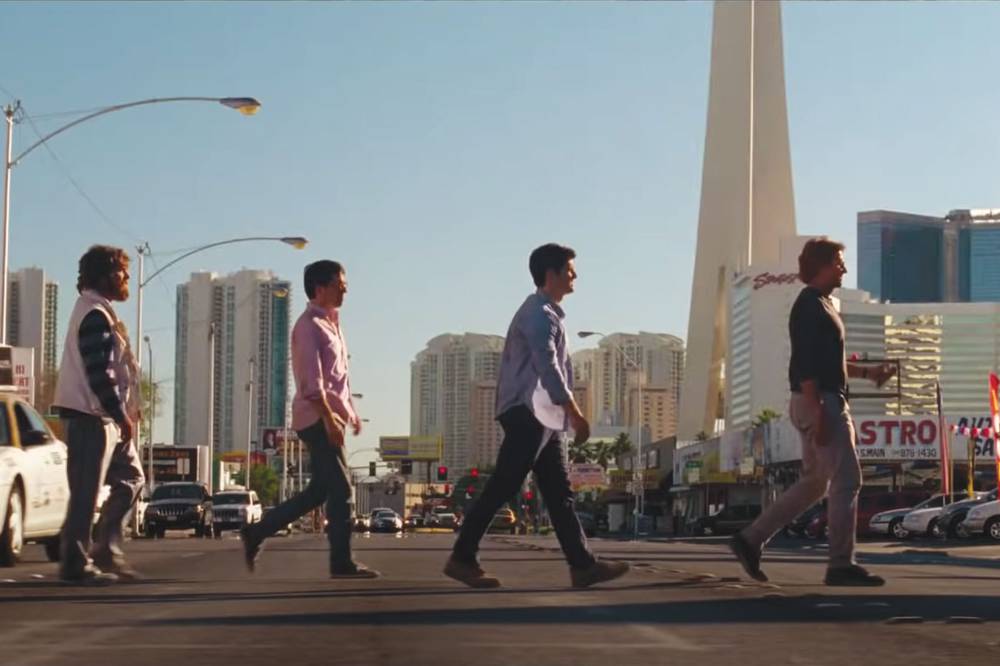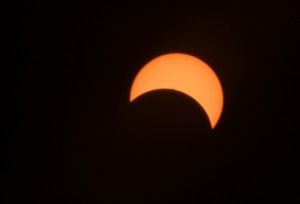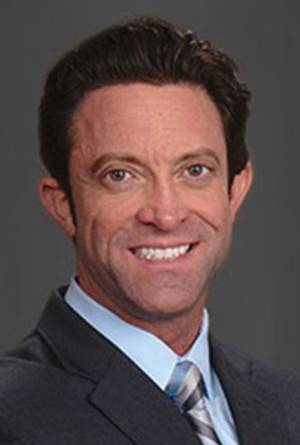Let’s say we’ve got a good export business,” Eric Preiss says. “We create a product, then export it to the world, driving money into our economy. Once we get that money, it’s done. Now take a look at a film, which is another good that’s created, then exported. You get all the people that pay to watch that movie, and all the attention that it derives. … That’s an export that will live on the internet for the rest of human history. It will never not exist.
“You know, [Martin Scorcese’s] Casino is 25 years old, and people still talk about it,” he adds. “[Las Vegas] has a good that we’ve not only exported to the world, but we’ve exported it to the world in perpetuity.”
That, in a nutshell, is Preiss’ calling. As director of the Nevada Film Office, Preiss and his team help films like Casino, Ocean’s 11, Fear and Loathing in Las Vegas and The Hangover shoot in Nevada—and convince reluctant filmmakers and producers to shoot in our state if they’re thinking of pulling a Francis Ford Coppola and re-creating Fremont Street on a San Francisco soundstage. (This really happened: see 1982’s One From the Heart.)
The NFO doesn’t issue filming permits—those are issued by Clark County, the City of Reno and the like—but they do keep track of what’s filming where, and Preiss estimates that some 1,000 film permits are issued in Nevada annually, most of them in the Las Vegas Valley. That’s a good amount of goods.
And in terms of inspiring visitors to come to Las Vegas, those films, television shows and music videos arguably work harder, and more guilelessly, than any advertising campaign ever could. Think about how some of the bigger Vegas movies—like, say, The Hangover, or Ocean’s 11—have permeated the popular culture to the point that visitor perception of the real Vegas has been reshaped. Back in the day, people came to Vegas to find the most carefree version of themselves; now, they can also imagine themselves as Hacks’ Deborah Vance, Honeymoon in Vegas’ Flying Elvises or even Paul Blart. Thanks to streaming services and YouTube, those characters—and whatever Vegas they call their own—will continue to draw new visitors, some dressed in Acapulco shirts and bucket hats, some seeking out Segway rentals.
Not bad, for a process that usually begins with a simple bit of research.
“Let’s say someone wants to create content in Nevada,” Preiss says. “They do some research and say, OK, Nevada has a film office, which most states and cities around the world do have; we’re part of the Association of Film Commissioners International, [which has] over 300 members.”
From that point, the NFO (online at nevadafilm.com) acts as a sort of concierge service. It can’t pull permits, but it can direct productions to the appropriate offices; it can also connect them to police, companies that rent traffic barricades, to local crew resources and more. “When it comes to the content creation industry, we serve all the needs [they have] to help them produce that content,” Preiss says.
Sometimes, a bit of persuasion is required. While Nevada offers a transferable tax credit to productions that shoot in our state—it begins at 15% and can go as high as 25% if productions shoot in rural locations and hire a crew that’s at least 50% local—lots of other states, particularly New Mexico or Georgia, offer incentives that are similar or better. So the NFO works to shine a light on some of Nevada’s other advantages.
“A lot of our job is sales and marketing,” Preiss says. “We’re a business development agency, working with the Governor’s Office of Economic Development to grow this industry in Nevada. And in order to do that, we’re out there dealing with the studios and the content creation companies, showing them that Nevada is the place to do that.”
That could mean pointing out that Nevada has thousands upon thousands of affordable, cast-and-crew-ready hotel rooms available year-round, or sweating the details when the makers of Jason Bourne ask to shut down the Strip for an epic car chase. (It’s easily the best part of the movie.) It can also mean being humble when a big production like Netflix’s Army of the Dead—the Zack Snyder film that drew in some 75 million viewers in its first month, according to the Hollywood Reporter—comes to town for a couple of weeks, takes high-resolution scans of the Strip’s casinos and then re-creates Vegas elsewhere via CGI.
“In that one particular case, [the visual effects crew is] in town, they’re staying in rooms, they’re eating in restaurants, they’re spending money on rental cars, they’re spending money in sales tax,” Preiss says. “But then when it’s done, and it gets shown … you get to what people don’t talk a lot about, because previously it’s been harder to quantify, the return on content. … Whether it’s getting destroyed or vilified or honored, people see Vegas on the screen.
“That’s what we’re trying to do,” Preiss says. “We’re trying to get attention to the destination, so that people come to Vegas. And the impact of that attention is valuable. There’s a reason why a commercial on the Super Bowl costs $5 million.”






